Painting firefighters of Chernobyl. The disaster at the Chernobyl nuclear power plant. Liquidation. May flame of Chernobyl
30 years ago, on April 26, 1986, an accident occurred at the Chernobyl nuclear power plant. An explosion thundered at the fourth power unit. The reactor was completely destroyed, a radioactive cloud covered a large territory of Ukraine, Belarus, Russia - more than 200 thousand square kilometers. The accident is regarded as the largest of its kind in the entire history of nuclear power. 600,000 people are recognized as liquidators of the Chernobyl accident.
Five liquidators from those who were the first to enter the battle with fire at the Chernobyl nuclear power plant received a posthumous hero of Ukraine
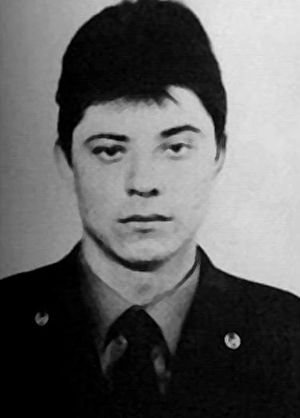
Nikolay Vashchuk, commander. His department laid a fire hose on the roof of the Chernobyl nuclear power plant. He worked for high altitude in conditions high level radiation, temperature and smoke. Thanks to the decisiveness of the firefighters, the spread of fire towards the third power unit was stopped.
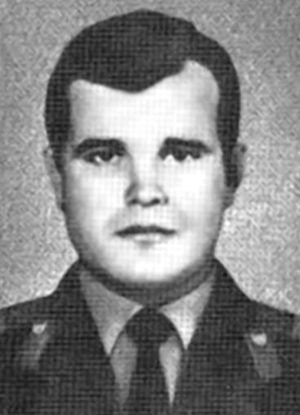
Vasily Ignatenko, commander. He was among the first to climb the roof of the blazing reactor. Fighting fires went on at a high altitude - from 27 to 71.5 m. Vasily carried Nikolai Vashchuk, Nikolai Titenko and Vladimir Tishura out of the fire when they lost consciousness due to high radiation.
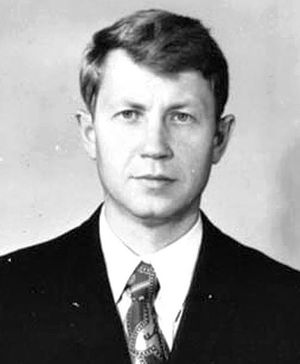
Alexander Lelechenko, deputy chief electrical workshop Chernobyl nuclear power plant. After the explosion, protecting the young electricians, he himself went to the electrolysis room three times. If he hadn't turned off the equipment, the station would have exploded like a hydrogen bomb. Having received medical care, he asked the doctors for a Fresh air, and he himself fled to the power unit to help his comrades again.
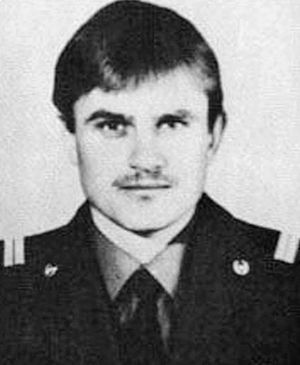
Nikolay Titenok, fireman. Not having the slightest idea of what awaits him, he arrived, like his comrades, in sleeveless jackets, without any protection from radiation. He threw away pieces of radioactive graphite with his boots and canvas mittens. Because of high temperature firefighters took off their gas masks in the first 10 minutes. Without such dedication, the emission of radiation would have been much greater.
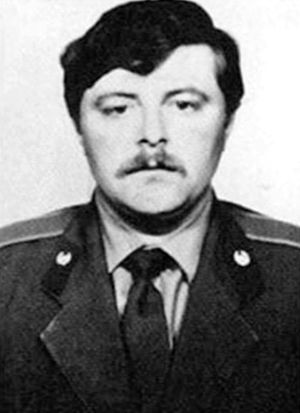
Vladimir Tishura, senior firefighter. Was among those who put out the reactor hall - there was the maximum level of radiation. Within half an hour, the first affected firemen appeared. They began to show vomiting, "nuclear sunburn", the skin was removed from their hands. They received doses of about 1000-2000 μR / hour and more (the norm is up to 25 μR).
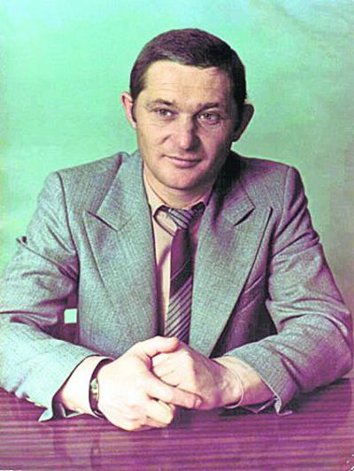
Survived the lethal dose
Leonid Telyatnikov
In 1986, Leonid Telyatnikov worked as the head of the fire department of the Chernobyl nuclear power plant. Within minutes after the explosion, he, along with a team of 29 firefighters, rushed to the station. “I had absolutely no idea what had happened and what awaited us,” he recalled. - But when we arrived at the station, I saw the ruins, covered with flashes of lights, reminiscent of Bengal lights. Then he noticed a bluish glow over the ruins of the fourth reactor and spots of fire on the surrounding buildings. This silence and flickering lights were eerie. " Realizing the danger, Telyatnikov twice climbed onto the roof of the turbine hall and the reactor compartment to extinguish the fire. It was the highest and most dangerous point. Due to the fact that Telyatnikov, as a leader, set the tasks correctly, chose the location of the fire engines - the fire did not spread to the neighboring blocks and was extinguished. The liquidators felt the effect of the high level of radiation right at the fire. “My father told me that the second time he barely came down from the roof of the reactor, he felt so bad,” the hero's son Oleg Telyatnikov told us. Leonid received an irradiation dose of 520 rem - almost fatal, but survived. In September 1986, 37-year-old Telyatnikov was awarded the title Hero of the Soviet Union, awarded the Order of Lenin. He died in December 2004.
Firefighters entered into mortal combat with the fire. Already seven minutes after the alarm signal, fire brigades arrived at the nuclear power plant. Major commanded them internal service Leonid Petrovich Telyatnikov. Next to him, in the forefront of the fire fighters, were the commanders of the fire guards, 23-year-old lieutenants of the internal service Viktor Nikolaevich Kibenok and Vladimir Pavlovich Pravik. By their example, they carried away the fighters, gave clear commands, went where it was most dangerous. Firefighters accomplished a real feat - they averted the disaster, saved thousands of human lives. But the dose of radiation that the brave officers received was very high.
Lieutenants Viktor Kibenk and Vladimir Pravik were posthumously awarded the title of Hero of the Soviet Union.
Leonid Telyatnikov was also awarded the Gold Star of the Hero. After treatment, he continued his service, became a general. But the disease did not recede. The hero passed away in 2004.
Let's return again to the tragic days of Chernobyl. How did things turn out after they repulsed the first fiery blow? Fighters fire department continued their military work. The watch at the firing line was taken by consolidated detachments from fire departments throughout the country. They were supervised by the lieutenant colonel of the internal service, the head of the operational-tactical department of the GUPO Ministry of Internal Affairs of the USSR, Vladimir Mikhailovich Maksimchuk.
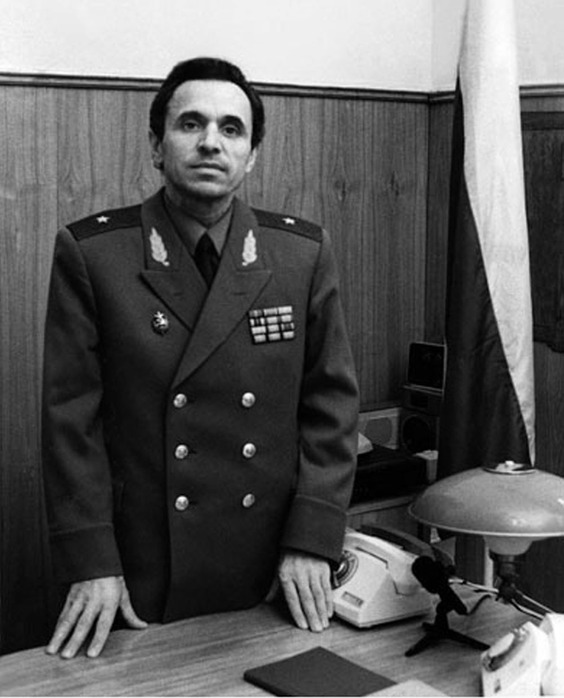
On the night of May 23, 1986, a dangerous situation arose again at the Chernobyl nuclear power plant. The flames that broke out crept up to the turbine room, filled with tons of oil, and to the pipelines, where there was hydrogen. The slightest delay could lead to a shutdown of the pumps and exit from the regime of the third unit of the Chernobyl nuclear power plant, which threatened a terrible catastrophe. Its consequences would be much more serious than the consequences of the April 26 disaster. Assessing the situation, Maksimchuk chose the only correct method of extinguishing in that situation: firefighters entered the danger zone in teams of five people, worked there no more than 10 minutes, and then they were immediately replaced by another link. Vladimir Mikhailovich himself took a personal part in reconnaissance of the lesion, then did not leave the fire zone for almost 12 hours and, already giving up his last strength, made a calculation of the foam attack, which finished off the remaining fires. The skillful actions of Vladimir Maksimchuk saved people (more than three hundred people!), The station and, as they say, half the planet. The tactics he proposed to extinguish fires at nuclear facilities had no analogues before and later became the property of the world community of firefighters. Later, doctors determined: during these dramatic hours, Lieutenant Colonel Maksimchuk received an ultra-high dose of radiation - about 700 roentgens. With severe radiation burns to his leg and respiratory tract, he was taken to the hospital of the Ministry of Internal Affairs in Kiev. Information about what happened was classified, and the commander's feat was not assessed in a timely manner ... Vladimir Mikhailovich had a death sentence for eight years, but he did not lose optimism, continued to work hard, achieve his goals, while, as before, he often risked my life. In 1987, it was Vladimir Maksimchuk who supervised the extinguishing complex fire in the hotel "Russia" in Moscow, in 1988 - extinguishing a fire on the Ural-Western Siberia pipeline. In 1989, he supervised the liquidation of a large fire at a chemical plant in the Lithuanian city of Ionava, where he applied the tactics worked out in Chernobyl. And then - despite the most severe painful illness (thyroid cancer and stomach cancer), which has progressed since 1989 due to radiation in Chernobyl, having suffered several complex operations, continued to do great things. In 1990, Vladimir Maksimchuk was awarded the rank of "Major General of the Internal Service", in the same year he was appointed First Deputy Chief of the Main Fire Department of the USSR Ministry of Internal Affairs. Having behind him the experience of extinguishing fires in Chernobyl, Ionava, in other "hot spots" of the USSR, an outstanding personality, a prominent specialist, an altruist and a fan of firefighting becomes the initiator of the creation of an effective national security system and the fight against accidents, disasters and natural disasters- the domestic emergency response service for emergencies... Thanks to his perseverance and personal participation in the country, the foundation of the emergency rescue service was laid - in the structure of the fire department, a network of specialized teams for carrying out priority emergency rescue operations was created (which became the prototype of the modern EMERCOM of Russia), fire fighting equipment, fire-fighting equipment and rescue equipment. In 1992, he headed the Moscow fire department, where a radical revolution in the work of the service was made: the first helicopter fire and rescue service in Russia was created, special squad for extinguishing large and most dangerous fires, fire departments received modern rescue equipment, opened The educational center for the training of fire specialists, the "01" service has been completely modernized. The last feat of the brave firefighter was the rapid extinguishing of the buildings of the White House and the Moscow City Hall after the tragic events in October 1993. May 22, 1994 Vladimir Mikhailovich died. Named after the fearless officer: a school at home, a fire boat in Moscow, a specialized fire Department N2, in which he began his service in Moscow, Moscow Technical Fire and Rescue College No. 57. Since 1994, international competitions in fire-applied sports for the General Maksimchuk Cup have been held. In 2003, by presidential decree Russian Federation Vladimir Mikhailovich Maksimchuk was posthumously awarded the title of Hero of Russia.
The feat of the Chernobyl heroes will always serve as an example of courage, highest professionalism and loyalty to their duty for Russian and Ukrainian firefighters.
Antonova Julia
Directorate for HLW of the Main Directorate of the EMERCOM of Russia in Moscow
The Chernobyl accident is the largest disaster in the history of the peaceful atom. Chernobyl 600 times surpassed Hiroshima in terms of pollution power the environment... In the very first hours, atomic specialists and firefighters arrived at the scene of the emergency to eliminate the accident - "liquidators", they did not yet know how high and dangerous the doses of radioactive contamination were. At any cost, it was necessary to extinguish the fire so that the fire would not spread to other power units, so that the Chernobyl disaster would not take on a global scale. The heroes of the Chernobyl nuclear power plant did not think about death. Within 7 minutes after the alarm signal, fire brigades arrived at the nuclear power plant. It was their job, but neither did the feat. They did not represent the seriousness of the threat - invisible and inaudible - and saved thousands of lives. The radiation dose received by the firefighters turned out to be very high - doses of about 1000 - 2000R and more ... Four firefighters died after 2 weeks. The rest of the firefighters who participated in the localization and extinguishing of the fire at the 4th unit of the Chernobyl nuclear power plant did not receive lethal doses, and were sent to hospitals in Kiev and the region. During the day of April 27, a lot of fire brigades from other cities (Irpenya, Brovarov, Boyarka, Ivankov, Kiev) were involved in pumping water from the lower levels of the station by tankers and PNS. From the pumped-over water there was a light of about 200 - 500R. Then, on April 26, in the accident at the Chernobyl nuclear power plant, 24 people from the operating personnel of the Chernobyl station were killed. The feat of the Chernobyl firefighters aroused feelings of deep admiration and gratitude not only among the citizens of the Soviet Union, but also among the inhabitants of the entire planet. Firefighters from the city of Schenectady (USA) made a memorial plaque with their own money in memory of those who entered into a dramatic struggle with the raging atom. The writing on that board reads - "Fireman. He is often the first to go where danger arises. So it was in Chernobyl on April 26, 1986. We firefighters in Schenectady, New York, admire the courage of our brothers in Chernobyl and deeply mourn the losses they have suffered. A special brotherhood exists between firefighters all over the world, people who answer the call of duty with exceptional courage and courage. " This plaque was handed over by the delegation of the American city to the permanent mission of the USSR, the Ukrainian SSR and the Byelorussian SSR to the UN. She was brought from overseas to Chernobyl and at a meeting of firefighters from Pripyat and Chernobyl was solemnly presented to the team of the unit. In May 1986, there was another fire at the Chernobyl nuclear power plant, which few people know about. On May 22-23, 1986, at 2 am, a strong fire broke out in the rooms of the 4th nuclear power unit of the nuclear power plant damaged by the April catastrophe. The sarcophagus over the reactor, which emits strong radiation, has not yet been completed. The main circulation pumps and high voltage cables. Lieutenant Colonel Maksimchuk Vladimir Mikhailovich, led the consolidated group of fire brigades-liquidators, was at the head of the reconnaissance group himself penetrated into the fire zone. The reconnaissance established the location and nature of the fire, but the worst thing was that the radiation was 250 roentgens per hour. In order not to receive a lethal dose of radiation, a person could be in this zone for no more than a few minutes. Then Maksimchuk made the only true decision: all the equipment was introduced into the fire extinguishing zone and remained there, and people worked there for 10 minutes in combat groups. While one group was extinguishing the fire, the fighters who had come out of the fire reported to the prepared groups the situation and explained what to do. The heroes-liquidators of the fire at the Chernobyl nuclear power plant worked, replacing each other, and Vladimir Maksimchuk participated in almost every sortie, kept the situation under control. When everyone was in hell, but the fire was still going on, people, following the example of the commander, went there a second time, without an order. In the morning, the fire was extinguished, and the threat of a second explosion of the reactor was over. Of the 318 firefighters who fought with fire and radiation that night, many received high doses of radiation, 40 were hospitalized, including Maksimchuk, he received a huge dose of radiation. Information about what happened was classified, and the feat of the firefighters who worked on that fire was not appreciated ... About this May fire "upstairs" a tough decision was made - to be silent - not to disturb the society, already frightened by the word "Chernobyl" ... The fire is thoroughly was hushed up, the feat fell into the category of "secret". The exploits of the Chernobyl liquidators did not end that night. In fact, every day of being in that pitch hell - which was created by man himself - was a feat. The construction of the sarcophagus continued, and radioactive debris was raked. From the memoirs of an eyewitness photojournalist. “The truck driver, army general, minister, concrete worker were dressed alike, communicated with each other completely on equal terms, and even the people we knew were also indistinguishable from one another - each was wearing a respirator. A standard respirator, similar to a pig's snout and soon replaced by "petals" - much more perfect protection, after which there was no longer any diaper rash on the face. In that terrible summer, because of the heat around the mouth and nose, people almost got ulcers - they didn’t take off respirators for hours ”. After a serious illness, Vladimir Maksimchuk - died on May 22, 1994. He was buried at the Mitinskoye cemetery in Moscow, at the memorial to the victims of Chernobyl. For courage and heroism in the performance of a special assignment by the Decree of the President of the Russian Federation No. 1493 dated December 18, 2003, Vladimir Mikhailovich Maksimchuk was posthumously awarded the title of Hero of the Russian Federation, the "Golden Star" was awarded to the hero's widow.
Victoria Maltseva
Image caption The widow of the operator of the Chernobyl NPP Valery Khodymchuka Natalia
For more than 20 years, Natalya Khodymchuk from Kiev traveled to Moscow on April 26 to the Mitinskoye cemetery to the memorial to those killed in the Chernobyl accident.
There is the grave of her husband, Valery Khodymchuk, the operator of the Chernobyl reactor department.
The hill is symbolic. When an explosion occurred on the night of April 26, 1986 at the fourth power unit of the Chernobyl nuclear power plant, Valery was in the turbine hall of the station. His body was never found under the rubble of the station.
“I would like to know how he died. It still worries me, although 29 years have passed already. But I will never know,” the woman says.
However, this year the trip of relatives of those killed in the Chernobyl accident to the Mitinskoe cemetery in Moscow was canceled due to the situation in relations between Ukraine and Russia.
“In recent years, the Chernobyl Union of Russia has helped us organize the trip. But now we will not take money from Russia,” says Alexander Zelentsov, chairman of the organization of Chernobyl disabled people, Luch 5-2.
Luch 5-2 brings together relatives of those who died from radiation sickness after the Chernobyl accident. Mr. Zelentsov notes that on April 26, instead of the Mitinsky cemetery, relatives go to the Chernobyl church in Kiev.
Cemetery under concrete
At the Mitinskoye cemetery in Moscow, there are 30 graves of the first victims of the Chernobyl accident - these are the firefighters who were the first to leave to eliminate the fire, and the workers of the nuclear power plant.
Most of them died of radiation sickness in the 6th clinical hospital in Moscow in the first months after the tragedy - in May-July 1986.
Image caption Relatives of those killed in the Chernobyl accident at the Mitinskoye cemetery in Moscow (photo from the Khodymchuk family archive)During the funeral at the Mitinskoye cemetery, special security measures were observed, says Anna Korolevskaya, deputy director of the Chernobyl National Museum.
The Chernobyl Museum contains declassified documents, maps, photographs and memoirs of participants in those events.
“The bodies were first wrapped in plastic, then placed in a wooden coffin, then a wooden coffin in plastic, and then all this was sealed in a zinc coffin and buried,” says Ms. Korolevskaya.
Later, according to her, the burial place was filled with concrete. Among these 30 graves, three are symbolic. One of them is engineer Vladimir Shashenok.
After the accident, Shashenok, according to eyewitnesses, received such severe burns from radioactive steam that the person who carried him out after the accident from the station left a burn from his body.
Vladimir Shashenok died at dawn on April 26. They buried him in the cemetery of the village of Chistogalovka, which is next to the station.
Another of the first victims of the Chernobyl accident was Alexander Lelechenko, deputy head of the electrical department of the Chernobyl nuclear power plant.
"He escaped from the Pripyat hospital and returned to the station. Lelechenko realized that he received a large dose of radiation, but continued to work as long as he could, to eliminate the accident. He was treated already here in Kiev. But they could not save him. He received a large dose of radiation - more than 1500 thousand roentgens, and 700 roentgens are fatal, "says Anna Korolevskaya.
Alexander Lelechenko died of radiation sickness in Kiev on May 7, 1986. At the Mitinskoye cemetery, a symbolic grave was erected for him next to everyone.
Of the 12 personnel of the Chernobyl turbine hall, who were on shift on the night of April 26, eight died of radiation sickness, says a representative of the Chernobyl museum.
"Firefighters fought the accident outside, and inside the building of the fourth power unit, the plant personnel fought the accident and the fires that occurred there, in the conditions of a pipeline rupture, when oil was boiling around there, there was radioactive steam," says Ms. Korolevskaya.
Image caption Memorial plaque to Valery Khodymchuk in the third power unit of the Chernobyl NPPThe Chernobyl nuclear power plant is another place where Natalya Khodymchuk honors the memory of her deceased husband.
“I go to Chernobyl to see Valera every year on March 24, his birthday. He is still there,” the woman says, sighing.
Recording of the first negotiations of the ChNPP dispatcher
On April 26, 1986, when the reactor of the 4th unit of the Chernobyl nuclear power plant was already in ruins, the commander of the fire department L.P. Telyatnikov took his vacation and was supposed to go to work only on the 28th. She and her brother were celebrating his birthday, when a phone call... Immediately leaving everything, and arriving at the site of the fire at the 4th unit of the Chernobyl nuclear power plant, Leonid Petrovich immediately saw that he needed to ask for help from wherever he could, since there were very few people on the spot. Immediately he ordered that Lieutenant Pravik urgently transmit call number 3 to the region, which he did. On call # 3, all fire engines of the Kiev region, wherever they were, had to urgently move to the Chernobyl nuclear power plant.
Meanwhile, firefighters Shavrey and Petrovsky were already on the roof of the turbine room, whose gaze opened up a fiery-smoky flurry. Fighters from the sixth unit were walking towards them, their condition getting worse every minute. They helped them to reach the stairs, on which they themselves climbed to the roof, and they themselves rushed to extinguish the flame.
Firefighter Prischepa connected the hoses to the hydrant and, together with his comrades, climbed onto the roof of the turbine hall of the 4th unit of the Chernobyl nuclear power plant. When we got in, we saw that in some places there was no overlap. Several slabs fell down, while others were still lying in their places, but to be honest, it was dangerous to walk on them. Prishchepa was forced to go downstairs again to warn his comrades, where he met Major Telyatnikov. Together they decided to set up a post of watch and not leave it until the complete victory over the fire.
Until five in the morning, Prischepa, together with Shavrey and Petrovsky, fought the fire on the roof of the turbine hall, until it became very bad. Actually, it became bad almost immediately, but the firefighters considered it a consequence of the heat and acrid smoke from the burning bitumen and endured it. But by morning, when the fire on the roof of the turbine hall was already extinguished, it became very bad, and they decided to go down to the ground.
Pravik's men in full force were thrown to extinguish the roof of the turbine hall, since they arrived at the scene first. The calculation of Kibenk, who arrived a little later, got to put out the fire in the reactor compartment, where the fire raged at different levels. In the central hall, the flames raged in five places at once. These centers of radioactive fiery hell began to extinguish Kibenok, Vashchuk, Ignatenko, Titenko and Tishchura. When the fire in the reactor hall of the 4th unit of the Chernobyl nuclear power plant and the separator rooms was completely extinguished, only one of the most powerful and dangerous hotbeds remained - the reactor. Firefighters sent several cannons into the humming core, but the water was powerless. Can you extinguish 190 tons of incandescent radioactive uranium with water? It's like trying to put out a pioneer fire out of a little need.
While Telyatnikov was absent, Lieutenant Pravik repeatedly climbed to the roof of block "B" in order to see the reaction of the fire to the efforts made by the firemen and determine further tactics of combating the elements, and also approached the reactor several times.
When Telyatnikov arrived at the Chernobyl NPP, Pravik took over the function of his first assistant.
First, it was necessary to stop the fire in the main directions. Telyatnikov threw one crew of firefighters to extinguish the fire in the engine room, two others fought with the bubbling flames on the way to the neighboring, third block of the Chernobyl nuclear power plant. They put out several fires in the central hall.
The situation changed every minute, so Telyatnikov himself climbed several times to the seventy-first mark in order to control the direction of the fire. Heavy poisonous smoke from the burning bitumen obscured the eyes and caused a hysterical cough, and the concrete structures the coatings threatened to collapse into the nuclear underworld at any moment. A total of 37 fires were extinguished on the roof of the turbine hall and in the reactor room.
The molten bitumen adhered to the boots, the smoke corroded the eyes, and black radioactive ash from the burning graphite poured onto the helmets from above. Leonid Shavrey was on duty on the roof of block "B" and made sure that the fire did not spread further. Both outside and inside there was unbearable heat, so Shavrey even took off his helmet, trying to catch his breath. The cough was choking, the chest pressed from the inside, there was nothing to breathe. At that time, no one seriously thought about radiation. But by the morning, one after another with clouding of consciousness, nausea and vomiting, people began to fail.
The clock was half past four when Telyatnikov went down to the block control panel to Akimov to report on the situation on the roof. He said that people are getting sick, isn't it from radiation? The dosimetrist was called. Gorbachenko came, said that the radiation levels in the territory were not fully clarified, and gave Pshenichnikov to help. Together we went to the staircase and elevator block to get to the roof through the door above, but the door was closed. The burglary attempt was unsuccessful, and there was nothing to do but go downstairs and go out into the street. Stumbling over pieces of graphite, we went around the building of the 4th block.
Telyatnikov at that time was already very bad, but he sinned on smoke poisoning and high temperature, which he had to experience while extinguishing the fire. Pshenichnikov had a radiometer with him, but it could measure no more than 4 roentgens per hour. Everywhere, both at roof level and at zero mark, the device went off scale, exact levels radiation could not be found. Later, experts found that on the roof in different places it was from 2 thousand to 15 thousand roentgens per hour. Actually, the fire on the roof flared up because of the incandescent fuel and graphite that fell on it. The molten bitumen burst into a bright flame, and firefighters walked all over this nuclear-fiery mess in tarpaulin boots. Downstairs, however, was no better. Highly radioactive nuclear dust that escaped from the inside of the reactor to freedom, covered everything around with a poisonous coating.
Kibenok, along with his guys, were the first to break down, a little later Lieutenant Pravik joined them. However, by five in the morning all the flames were extinguished. A heavy price had to be paid for the victory over the elements. Seventeen firefighters were sent first to the medical unit, and in the evening of the same day by plane to Moscow. Fifty fire engines from Chernobyl and other districts of the Kiev region arrived at the scene of the accident to help. But by this time the most dangerous work had already been done.
FIVE LIQUIDATORS FROM THOSE WHO WERE FIRST TO FIGHT WITH FIRE AT CHNPP GOT THE HERO OF UKRAINE POST-DEATHLY:
Nikolay Vashchuk, commander. His department laid a fire hose on the roof of the Chernobyl nuclear power plant. He worked at high altitude in conditions of high levels of radiation, temperature and smoke. Thanks to the decisiveness of the firefighters, the spread of fire towards the third power unit was stopped.
Vasily Ignatenko, commander. He was among the first to climb the roof of the blazing reactor. Fighting fires went on at a high altitude - from 27 to 71.5 m. Vasily carried Nikolai Vashchuk, Nikolai Titenko and Vladimir Tishura out of the fire when they lost consciousness due to high radiation.
Alexander Lelechenko, deputy head of the electrical department of the Chernobyl nuclear power plant. After the explosion, protecting the young electricians, he himself went to the electrolysis room three times. If he hadn't turned off the equipment, the station would have exploded like a hydrogen bomb. Having received medical assistance, he asked the doctors for some fresh air, and he himself fled to the power unit to help his comrades again.
Nikolay Titenok, firefighter. Not having the slightest idea of what awaits him, he arrived, like his comrades, in sleeveless jackets, without any protection from radiation. He threw away pieces of radioactive graphite with his boots and canvas mittens. Due to the high temperature, the firefighters took off their gas masks in the first 10 minutes. Without such dedication, the emission of radiation would have been much greater.
Vladimir Tishura, senior firefighter. Was among those who put out the reactor hall - there was the maximum level of radiation. Within half an hour, the first affected firemen appeared. They began to show vomiting, "nuclear tan", skin was removed from their hands. They received doses of about 1000-2000 μR / hour and more (the norm is up to 25 μR).
SURVIVED WITH A DEADLY DOSE:
In 1986 Leonid Telyatnikov worked as the head of the fire department of the Chernobyl nuclear power plant. Within minutes after the explosion, he, along with a team of 29 firefighters, rushed to the station. “I had absolutely no idea what happened and what awaits us,” he recalled. “But when we arrived at the station, I saw the ruins, engulfed in flashes of lights, reminiscent of Bengal lights. Then he noticed a bluish glow over the ruins of the fourth reactor and spots of fire on the surrounding buildings. The silence and the flickering lights were eerie. ” Realizing the danger, Telyatnikov twice climbed onto the roof of the turbine hall and the reactor compartment to extinguish the fire. It was the highest and most dangerous point. Due to the fact that Telyatnikov, as a leader, set the tasks correctly, chose the location of the fire engines, the fire did not spread to the neighboring blocks and was extinguished. The liquidators felt the effect of the high level of radiation right at the fire. “My father told me that the second time he barely came down from the roof of the reactor, he felt so bad,” the hero's son Oleg Telyatnikov told us. Leonid received an irradiation dose of 520 rem - almost fatal, but survived. In September 1986, 37-year-old Telyatnikov was awarded the title Hero of the Soviet Union, awarded the Order of Lenin. He died in December 2004.
Memorial to the firefighters who died during the liquidation of the Chernobyl accident
Low bow and eternal memory to the heroes-liquidators of the Chernobyl accident.






